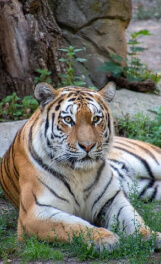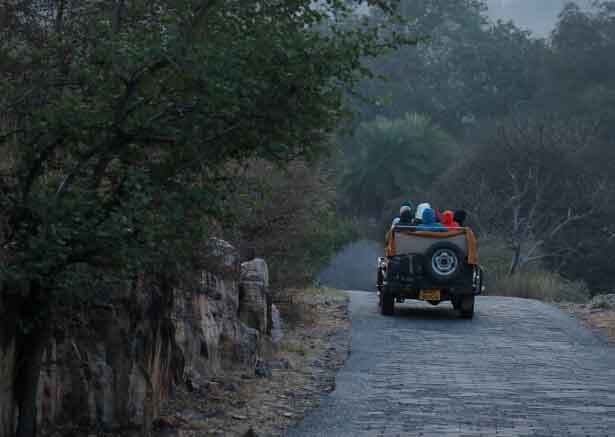
Kanha National Park also known as Kanha-Kisli National Park is one of the famous tiger reserve of India and the largest national park located in the magical land of Madhya Pradesh falls in the two districts Mandala and Balaghat. The present-day Kanha area is seperated into two protected areas, Hallon and Banjar, of 250 and 300 square kilometre (97 and 116 sq mi), respectively. Kanha National Park was created on 1 June 1955 and was designated as a tiger reserve in the year of 1973. Today, it sprawls over an area of 940 square kilometres. It is one of the most popular wildlife sanctuaries in India which attracts flocks of wildlife enthusiasts every year. Since its inception in 1862, Kanha has rated as top tiger zone and holds significant place for Barasingha.
Kanha is crowned as one of the best administered and managed parks in India. It is one of the ‘Navratanas’ of the India project tiger. A heightened tourists attraction within the Park is Bamni Dadar, popularly known as Sunset Point that offers the most awe-inspiring backdrop of the sunset against grazing Sambhars and Gaurs, magnifying the natural splendor of the area. Aside from its diverse wildlife and bird population, the frequent sightings of Tigers roaming in the wild at Kanha Wildlife Sanctuary remain the most popular tourist attention. Kanha Tiger Reserve is home to over 1000 species of flowering plants. The lowland forest is a mixture of sal and other mixed-forest trees, interspersed with meadows. The highland forests are tropical moist, dry deciduous type and of a completely different nature from bamboo on slopes.
For the real explorer, our Kanha Tour Packages are affordable with maximum offerings. We can customize it according to your choice.

Kanha National Park offers all wildlife essentials and with our Kanha jeep safari booking, one can push their limit while spotting animals of their choice.

We have proper arrangements for all the tourists in terms of accommodation and you can take a look at the minute details of hotels on our website.



Exploring the interiors of a dense wild forest always fascinates wildlife lovers and they visit such forest where they can explore.

Exploring the interiors of a dense wild forest always fascinates wildlife lovers and they visit such forest where they can explore.

Exploring the interiors of a dense wild forest always fascinates wildlife lovers and they visit such forest where they can explore.

Exploring the interiors of a dense wild forest always fascinates wildlife lovers and they visit such forest where they can explore.

Kanha National Park or Kanha Tiger Reserve is one of the wildlife sanctuaries of India and the largest national park of Madhya Pradesh, state in the heart of India. The present Kanha sanctuary is segregated into two sanctuaries, Hallon and Banjar, of 250 and 300 km2 respectively. Kanha National Park was created on 1 June 1955 and in 1973 was made the Kanha Tiger Reserve. Today it sprawls over an area of 940 square kilometres in the two districts Mandla and Balaghat of Madhya Pradesh.
The national park has a sound population of the Royal Bengal tiger, the sloth bear, Indian leopards, barasingha and Indian wild dog. The forest of Kanha is also depicted in the famous novel by Rudyard Kipling; The Jungle Book is based on jungles including this reserve. As before 19th century, the entire area was being governed by the Gond dynasty since many centuries and the Kanha Forest was little known since the slash and burn cultivation methods of both the Baiga and Gond tribes were being dominated at that area. They had good knowledge of the animals and their behaviours. It marks an important year during 19th century in the history of the Kanha National Park when the first forest management rules were instituted and cutting of various tree species like Sal, Teak, Saja, Shisham and Bija without official authorization were prohibited.
One of the finest tiger reserve of the country, the Kanha landscape has been renowned internationally for its rich flora and fauna, including, of course, the iconic tiger. While the Kanha Landscape is not notified/legally declared as such, evidently, it is named after the famous Kanha tiger reserve, part of the landscape.
And in the Kanha Tiger Reserve lies the source of the geneology of the most tigers spread over this landscape. Speaking generally, for immediate practical purpose, this landscape of around 3500 square kilometre, currently incorporates the Kanha core, the Kanha Buffer, the Phen Wildlife Sanctuary, parts of ecological corridors (Kanha-Pench, Kanha-Achanakmar, and Kanha-Bawegaon-Nagzira), and areas under different forest divisions contiguous to the Kanha Tiger Reserve. Currently there are five subspecies of this super cat. The world has already lost four of the nine subspecies of this charismatic species, further restricting its world population generally.